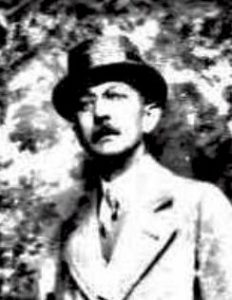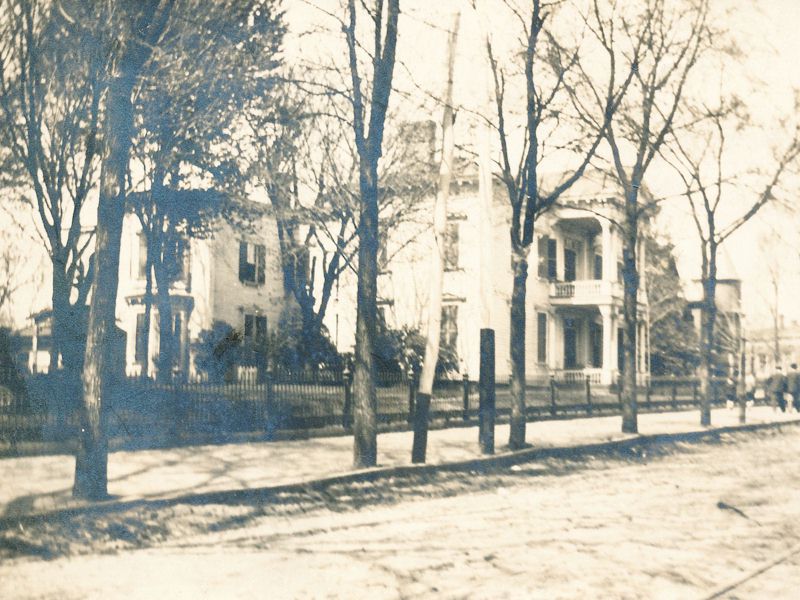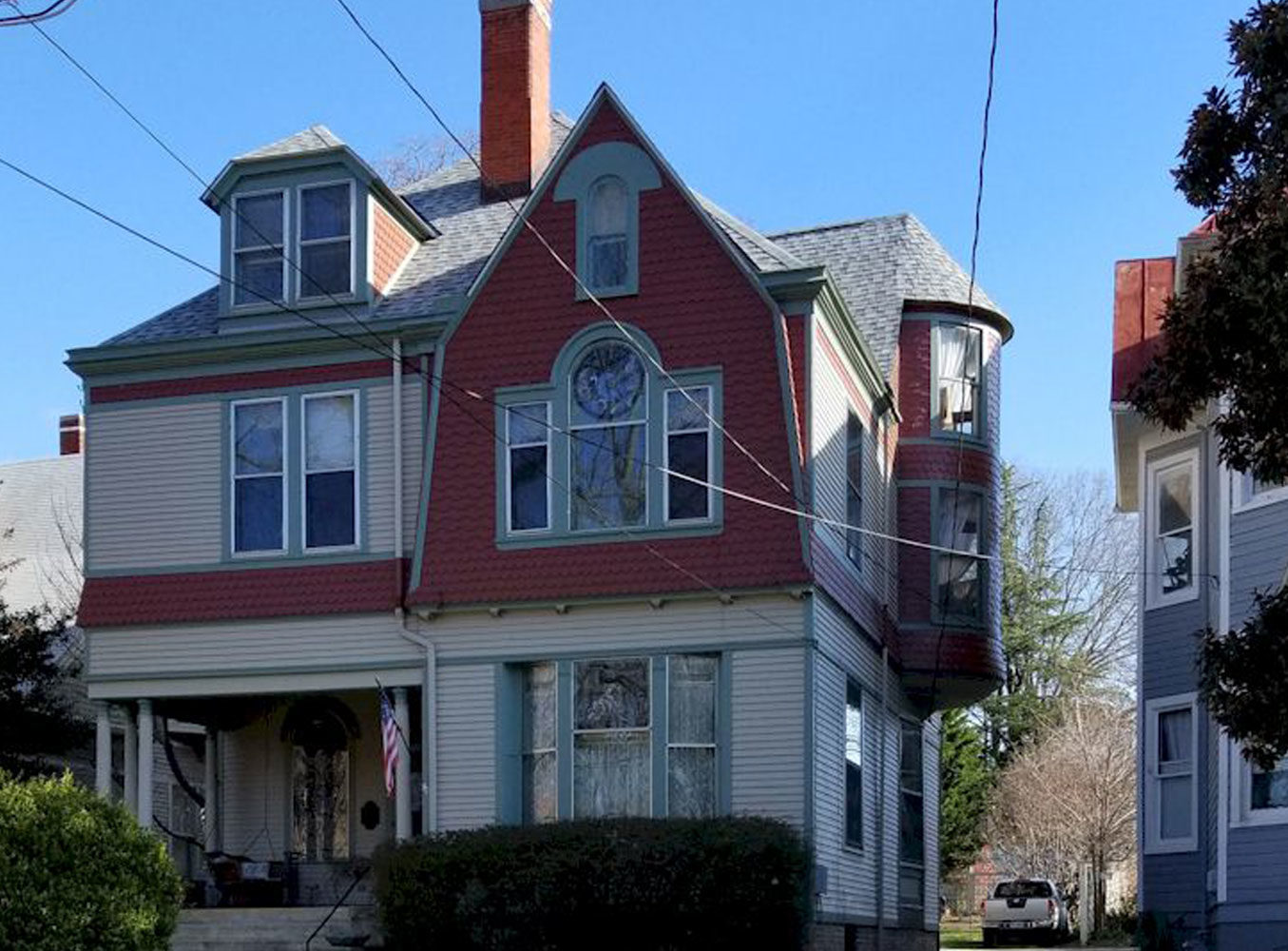
Maj. William Sutherlin, whose Main Street property behind his antebellum house once extended back to green street, sold a portion of this land to a group of local businessmen in 1888. As shown on a map by C.A. Ballou, 450 feet of land fronting on Holbrook Avenue was subdivided into nine lots. W.S. Copeland, J.L. Penn, C.T. Bethel, W.W. Clark, C.B. Keesee, W.J. Dance, and F.X. Burton purchased the parcel for $19,125.
In 1889 three of these gentlemen—C.B. Keesee, W.J. Dance, and F.X. Burton—bought “lot No. 3”, on which the American Picturesque house at 161 Holbrook Avenue now stands. Three years later, Mr. Keesee and W.J. Dance and Company sold the lot to W.D. Judkins. The finely-detailed dwelling subsequently erected by Mr. Judkins was valued at $4,000 according to the city land book of 1893.
The son of one of Virginia’s Methodist ministers, the Rev. William Elliott Judkins, D.D., William Duncan Judkins left Randolph-Macon College in 1876 after two years of study to go into the hardware business in Lynchburg, Virginia. After working in Baltimore, Maryland, and New York City, Mr. Judkins moved in 1890 to Danville, the hometown of his bride of four years, Kate Lee Holland, a daughter of Mr. and Mrs. C.G. Holland. Mr. and Mrs. Judkins were very exacting regarding the materials and workmanship that went into the solid dwelling they had built on Holbrook Avenue in 1892—as evidenced by the three leaded stained glass windows imported from Italy that flanked the staircase, and a mantle from France in the 1st floor living room period some of the floors are fine parquet.
The predominant feature of this interesting frame two-and-a-half-story house is a shingled projection outlined in the form of a Colonial Revival-style gambrel roof. The use of a modified Palladian window and a projecting second and third-story tower on the side elevation completes the design.

Mr. Judkins retained the house for twenty-seven years, although in 1898 he and his family moved to New York City where he later became a well-known merchant and broker. While in Danville he was an employee of the tobacco firm of George S. Hughes and Company on Bridge Street. At the time he left and for some years early in this century, the house was occupied by some of his relatives by marriage, members of the Holland family. This family was composed of Mrs. C.G. Holland, Nellie Holland, Bessie Holland (who later married Dr. Julian M. Robinson, a local physician) and C. Gilmore Holland, a member of the firm of Waddill-Holland and Flinn, and also head of the Danville Traction and Power Company.
In 1919 Mr. Judkins sold the house to Charles B. Davis, an executive in the Danville Warehouse Company and the manager of Planter’s Warehouse as well as other warehouses in the South. Mr. and Mrs. Davis, who had moved to Holbrook Avenue from the old Holcombe House at 903 Paxton Avenue, lived in the house until Mr. Davis’s death in 1926, and subsequently Mrs. Davis lived there for most of her remaining years. When she died in 1952 the property was acquired by one of her daughters, Mrs. John Calvin (Ruth Davis) Drake. Mrs. Drake’s husband, a native of Richmond, Virginia, was an executive of the Coca-Cola Company in Charlotte, North Carolina, and an uncle of Dr. Drake Pritchett. After Mr. Drake’s death she sold their home in Charlotte and returned to Danville. In the 1960s she redecorated and otherwise made extensive improvements on the Holbrook Avenue house in which she continued to live until her death in 1982. After remaining in the family for over sixty years, the property was sold at auction by Mrs. Drake’s heirs in 1983.
Its purchasers, Dr. and Mrs. Y.S. Lin, residents of Southwyck Farms, rehabilitated the house as three apartments taking advantage of its eligibility as a certified historic structure within a National Register Historic District. With most of its striking interior appointments intact from the early years of the house, the house and its apartments remain a sought after address.
Reproduced with permission from Victorian Danville – Fifty-Two Landmarks: Their Architecture and History © 1977 Mary Cahill and Gary Grant
